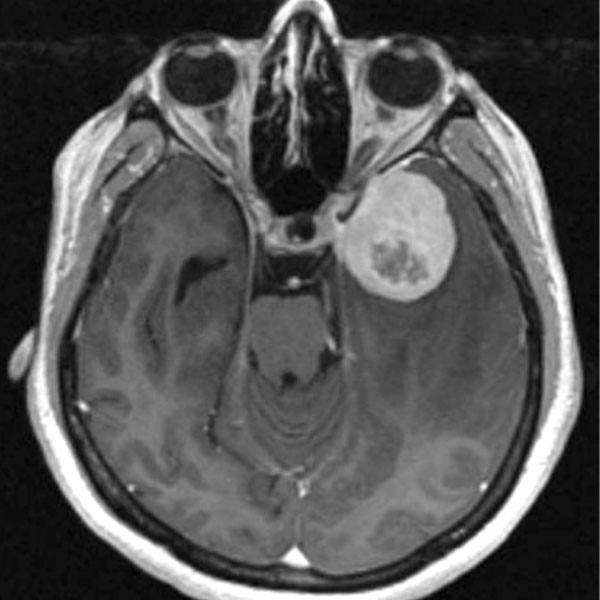-
Sharing Mayo Clinic: Throat cancer treatment gives dentist new perspective
After undergoing robotic surgery, radiation therapy and chemotherapy as part of a clinical trial to treat cancer, Bruce Trulson has gained a new understanding of how he can better care for his own patients.
In 2015, after nearly 40 years of practicing dentistry, Bruce Trulson, D.D.S., gained new insight into how to care for his patients when, following a diagnosis of throat cancer, he became a patient himself.
That summer Bruce noticed, while he was shaving, a lymph node under the right side of his jaw was swollen. When it remained that way for a few weeks, Bruce called his Mayo Clinic primary care provider. The call set him on a journey not only to a surprising diagnosis but to a unique approach to treating throat cancer. It also deepened Bruce's understanding of his own practice.
"It's made me a better dentist," says Bruce, who lives and works in Stewartville, Minnesota. "Since returning to work after my treatments, I've had a number of patients who've gone through cancer. They come back to see me because I've been there and done that. You speak the same language if you've gone through this sort of thing."
The experience also changed the way Bruce conducts his patient exams.
"I'm much more attuned to checking the lymph nodes of my patients," he says. "People come in to see the dentist on a regular basis, and we're the first line for finding these things."
A startling diagnosis
Bruce's path to survivorship began in an exam room with his primary care physician, Jay Mitchell, M.D., who's part of the Department of Family Medicine at Mayo Clinic's Rochester campus. After examining Bruce, Dr. Mitchell ordered an ultrasound of the swollen lymph node. He then referred Bruce to Mayo Clinic head and neck specialist Eric Moore, M.D., in Otorhinolaryngology. Bruce, who didn't have any other symptoms beyond the swelling, expected to be diagnosed with an infection and given an antibiotic. Instead, Dr. Moore ordered a CT scan and a biopsy.
Bruce had the biopsy on a Tuesday in August. Afterward he went back to see Dr. Moore, where he learned that he did not have an infection. He had cancer.
"It was like being hit on the side of the head with a two-by-four to hear that news," Bruce says. "But Dr. Moore had an exceptional chairside manner. He was very, very sensitive to my needs."
Blindsided by his diagnosis, Bruce called his wife and asked her to meet him in Dr. Moore's office. They learned that additional imagining with a positron emission tomography scan was needed before his physicians could plan his treatment. The scan, conducted that afternoon, revealed the cancer had not spread beyond Bruce's neck. That meant Bruce could have the tumor removed that same week.
"It was like being hit on the side of the head with a two-by-four to hear that news. But Dr. Moore had an exceptional chairside manner. He was very, very sensitive to my needs." — Bruce Trulson
"That sort of blew me out of my chair, how quickly there were able to get the ball moving, and impressed on me the significance of the diagnosis and getting the treatment done as soon as possible," Bruce says.
Bruce also had his own quick thinking to thank for the speed with which his treatment moved forward. His swift action in getting the swollen lymph node checked was critical to stopping the cancer before it spread beyond his neck.
"The tonsils and the base of the tongue are areas that don't have a whole lot of sensation. You can develop lumps and sores that you can't feel," Dr. Moore says. "Most people with this kind of cancer don't know it's there until it's in advanced stages."
Bruce learned that his cancer began as a lesion at the base of his tongue and had spread into his lymph nodes. But the good news was that it was highly treatable.
A novel approach
A multidisciplinary team, including Dr. Moore, Daniel Ma, M.D., in Radiation Oncology, and Katharine Price, M.D., in Medical Oncology, formed around Bruce to plan his treatment. Bruce had two options. He could receive a traditional treatment regimen that coupled surgery with six to seven weeks of radiation therapy and chemotherapy. This option frequently has high rates of success. But it can leave patients with life-altering side effects like damaged salivary glands and destroyed taste buds.
An alternative the team presented to Bruce would place him in a clinical research trial that also used surgery, radiation therapy and chemotherapy. But the study was examining whether cutting the radiation dose in half for people who had cancer that originated in the tonsils or base of the tongue and was caused by the human papillomavirus, or HPV, would maintain the same rate of cancer control as the traditional practice, while reducing side effects.
"They're hoping if this study pans out, and the outcomes are as good as they're expecting them to be, this will become the standard of care for this particular type of cancer." — Bruce Trulson
"With the rise in human papilloma virus, we're starting to see more people with these tumors, and more people are surviving," says Dr. Moore. "But they're having more side effects, so we wanted to see if we could deescalate the treatment process."
To Bruce it was a clear choice.
"Being a dentist and knowing the side effects of radiation to the head and neck, I decided to go with the study," he says. "They're hoping if this study pans out, and the outcomes are as good as they're expecting them to be, this will become the standard of care for this particular type of cancer. And the beauty of this treatment is the side effects are diminished considerably."
A successful step forward
Bruce says his physicians outlined that because the trial involved a new course of treatment, they couldn't tell him with certainty how well it would work.
"I had a lot of confidence in Mayo Clinic," Bruce says. "I didn't think they were going to do a study like this unless there's good evidence the outcomes would be good."
 The first step in scaling back the amount of radiation therapy needed for these patients involves using a minimally invasive surgical process. Robotic surgery that employs curved instruments, a telescopic camera and laparoscopic tools allows surgeons to view patients' tissues and cut out the diseased portions without making an incision.
The first step in scaling back the amount of radiation therapy needed for these patients involves using a minimally invasive surgical process. Robotic surgery that employs curved instruments, a telescopic camera and laparoscopic tools allows surgeons to view patients' tissues and cut out the diseased portions without making an incision.
"If we can take it using the mouth as the natural orifice, recovery is a lot quicker," Dr. Moore says.
During Bruce's operation, the tumor was removed using this minimally invasive approach, and more than 40 lymph nodes, four of which were cancerous, were taken out. Bruce awoke from his surgery with multiple tubes going in and out of his body. But his doctor's predictions about his recovery — just like their predictions about the side effects his treatment regime would produce — happened as expected.
"I am now back practicing dentistry, ATV-ing, fishing, reading good books, and most importantly, enjoying life with my grandchildren and my wife, who's the best caregiver in the world," Bruce says. "Dr. Moore, Dr. Ma, Dr. Mitchell, the nurses, everybody in the department was just so personable and caring. I really felt like they cared about me. I wasn't just another number they had to deal with."
A practice-changing outcome
In early October, Bruce began radiation and chemotherapy. Monday through Friday for two weeks, he received morning and afternoon sessions of radiation. One day a week, Bruce also received a chemotherapy infusion between his radiation sessions.
"I felt like a wet rag by the by the time the day was done," Bruce says. "But my feeling was, 'Let's get it over and not prolong this.'"
Bruce did have some side effects as a result of his treatments, including dry mouth, mouth sores and a loss of taste. But he feels the adjustments he's had to make, like drinking more water and eating more slowly, are minor impediments compared to the alternative.
"These trials do have the potential to change the standard of care. We're very excited about them." — Daniel Ma, M.D.
"I really believe my physicians at Mayo Clinic saved my life, and I am very, very thankful for that and the manner in which everyone there treated me," Bruce says.
Bruce's low rate of side effects tracks with the 79 other participants in the clinical trial. Compared to traditional throat cancer treatment, where 40 percent of patients require long-term feeding tubes due to complications from side effects, in the clinical trial, no one needed a long-term feeding tube. And at two years post-treatment, the cancer control rate is the same for patients in the study as patients who receive traditional, high-dose treatment.
Drs. Moore and Ma are hopeful the trial, which has now expanded to a third and final stage, continues to demonstrate the effectiveness of lowering the amount of radiation treatment needed to treat some head and neck cancers.
"These trials do have the potential to change the standard of care," Dr. Ma says. "We're very excited about them."
HELPFUL LINKS
- Read more about Bruce's clinical trial.
- Learn about throat cancer.
- Visit the Department of Otorhinolaryngology.
- Connect with others talking about ear, nose and throat disorders on Mayo Clinic Connect.
- Explore Mayo Clinic.
- Request an appointment.








